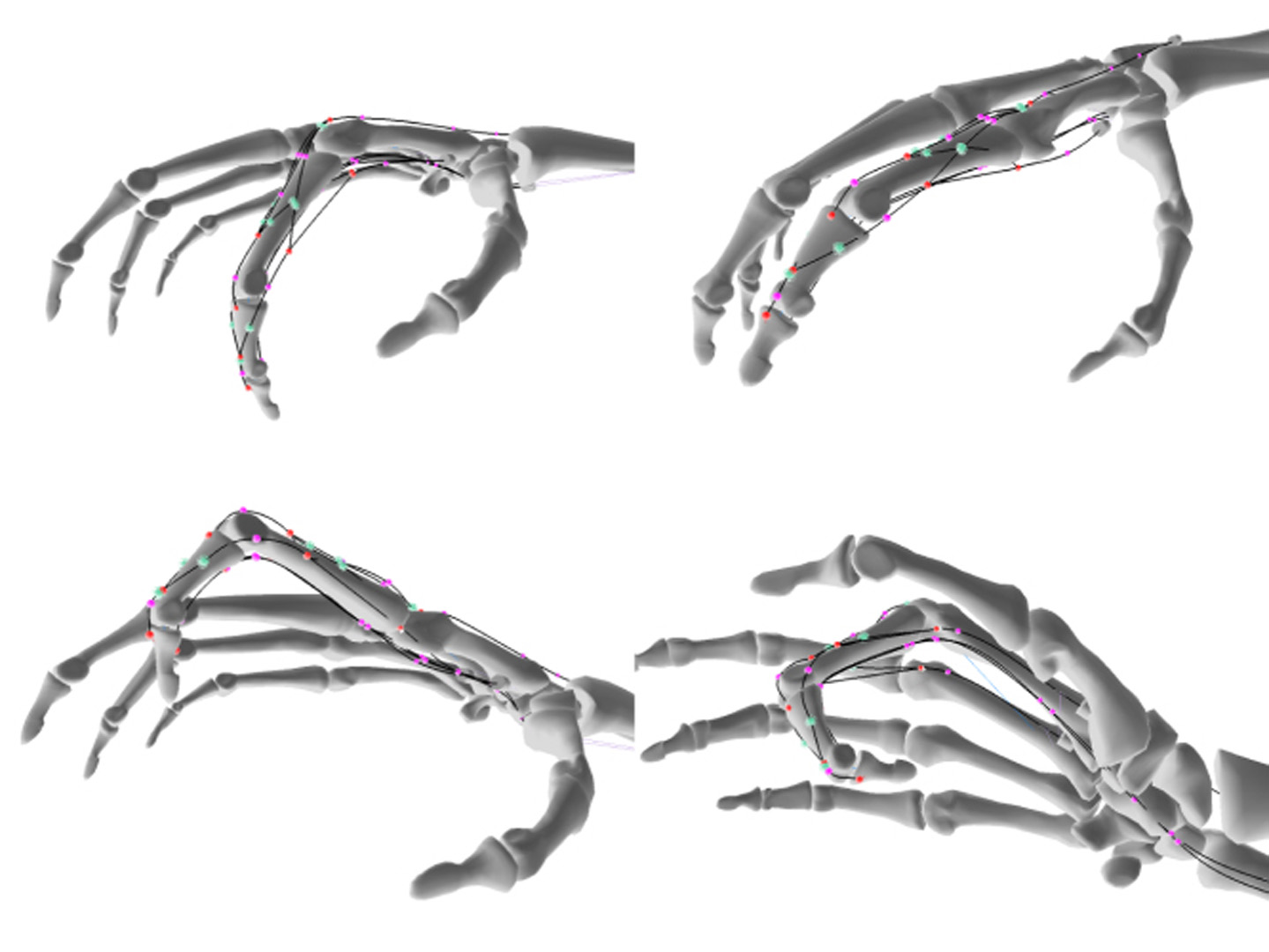“Simulating coordinated movement with tendons” by Sueda and Pai
Conference:
Title:
- Simulating coordinated movement with tendons
Session/Category Title: Bend and Stretch
Presenter(s)/Author(s):
Abstract:
Despite significant advances in the research of human movement [Kry and Pai 2006], simulating the dynamics of the human body, such as compliance coupling between joints, remains challenging. Simulating biomechanics is difficult, in part, due to the complex inter-dependence between tendons and bones. Modeling this interdependence is necessary, however, since much of the coordinated motion in human biomechanics is due to the specific ways in which tendons are arranged with respect to bones. Accurate tendon modeling is also important for visual effects, since tendon motion has a noticeable effect on skin deformation. We address these issues with a novel simulation framework that efficiently and accurately models the coupled dynamics of tendons and bones.
References:
1. Delp, S. L., and Loan, J. P. 2000. A computational framework for simulating and analyzing human and animal movement. Computing in Science & Engineering 2, 5, 46–55.
2. Kry, P. G., and Pai, D. K. 2006. Interaction capture and synthesis. In Proc. ACM SIGGRAPH 2006 Conference.
3. Lenoir, J., Grisoni, L., Meseure, P., Remion, Y., and Chaillou, C. 2004. Smooth constraints for spline variational modeling. In GRAPHITE ’04, ACM Press, 58–64.
4. Teran, J., Blemker, S., Ng-Thow-Hing, V., and Fedkiw, R. 2003. Finite volume methods for the simulation of skeletal muscle. In Symposium on Computer Animation 2003, Eurographics Association, 68–74.





